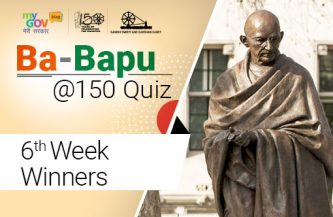A reform called Agnipath will ensure youthful and tech-savvy profile of armed forces while reducing burden of pensions and gratuities

In recent years, the Narendra Modi government has given special attention to defence and national security by taking meaningful steps to enable the Indian armed forces to evolve rapidly into a modern fighting force with cutting edge technologies.
The Government of India’s announcement of the Agnipath scheme for recruitment of soldiers, the majority of whom will serve for four years, is another step in the right direction. The proposal entails recruitment of Agniveers, 17.5 to 21 years old, for all the three services, based on “All India All Class (AIAC)” from recognised technical institutes like the Industrial Training Institutes through a centralised online system with specialised rallies and campus interviews. Medical eligibility and rigorous training standards will be maintained and their selection will be the exclusive domain of the armed forces. The best among the Agniveers, upto 25 per cent in each batch, will be selected for regular cadre to serve for another minimum of 15 years, based on a transparent and merit-based assessment.
The scheme is both generous and attractive in terms of emoluments and pay-outs. Upon release from service, the Agniveers will revert to civil society as holders of a special qualifying certificate and become the backbone of confident and disciplined human resources available across the country. Their integration into society and livelihood, including placement in alternative jobs, will be facilitated, including through credits for higher education. Apart from drawing a composite package of Rs 40,000 per month in the fourth year, they will each get Rs 11.71 lakh through the Seva Nidhi package in which their contribution of 30 per cent of the monthly salary will be matched by an equal amount by the government. In effect, they will have a sizeable sum, exempt from income-tax, to pursue their dreams, in addition to individual savings.
Life insurance cover of Rs 48 lakh, ex-gratia payment of Rs 44 lakh in case of death, and payment for the remainder of the four years of service in case of death, are huge plus points. Disability compensation of Rs 44/25/15 lakh respectively for 100/75/50 per cent disability is reassuring.
This path-breaking initiative by the government will open up regular intake and availability of youthful, patriotic, physically fit and highly-motivated youth who wish to don the uniform and serve the nation for short periods. In all, 46,000 Agniveers will be recruited this year.
The “colour service” of 17 years for soldiers may have resulted in an experienced and battle-hardened army, as some say, but it also led to an ageing army in which more than 60 per cent of men are above 30 years of age.
Notably, the Indian army in 1978 was more youthful than at present at the level of Other Ranks (ORs), with sepoys comprising 72.6 per cent of a total of 8,45,025 men, and subedars 1.6 per cent. Today, the number of sepoys has fallen below 40 per cent. This is not a desirable mix when it comes to physically strenuous deployments, especially in high-altitude areas. India’s armed forces need to be leaner, fitter and more youthful. Currently, the number of junior commissioned officers (JCOs) and equivalent ranks is disproportionately higher due to regular promotions. Recruiting ever greater numbers simply to keep the armed forces youthful is unsustainable. Agnipath will help keep in check the absolute numbers while ensuring a constant stream of young recruits.
All major militaries in the world are undergoing reform. There is a trend towards reduction in the number of personnel and emphasis on increasing capital expenditure on modern weapons and equipment. The People’s Liberation Army (PLA) underwent a massive demobilisation from the 1980s onwards, bringing down total numbers from 4.5 million to about 2 million, with the focus on modernisation.
One of the greatest challenges facing the Indian armed forces today is the overall budgetary constraint. This is despite the fact that the Modi government has spared no effort to provide the armed forces with necessary weapons and equipment particularly following the Chinese aggression in eastern Ladakh. Ballooning salary and pension bills have placed enormous stress on the availability of funds for military modernisation.
The emphasis of Agnipath in India is on ensuring a youthful and tech-savvy profile of the armed forces while reducing the overall burden on pensions and gratuities.
Contactless warfare in the digital era means that future wars will be fought with artificial intelligence, autonomous systems, stand-off weapons, cyber space and space-based ISR (Intelligence Surveillance and Reconnaissance) playing a key role. The Agniveers will inject additional skill-sets into the armed forces, besides bringing down the average age by 4-5 years.
In many modern armed forces around the world, the service period ranges from 2 to 8 years with options for active and reservist service. The argument that shorter duration service could compromise on training, morale and commitment rings hollow. The Israeli army has service of 30 months and 22 months respectively for men and women, yet enjoys a reputation for being among the best in the world. The US and the UK also have shorter duration contracts. France has short duration contracts of between one and 10 years depending on specialisation. The training for Agniveers will be comparable to the timeframe in many world-class armed forces.
Fears that the Agnipath scheme will result in demobilised young soldiers posing a violent threat to society are misplaced. Demobilised soldiers in their 30s regularly leave the army at the end of the mandated “colour service” and do not pose a threat to society. There is no reason to believe that those even younger with better skill-sets and motivation should act differently.
The AIAC composition of army units such as the Rashtriya Rifles (RR), the Guards and the Parachute Regiment has worked well. There is no reason why the infusion of Agniveers from all over India into the various regiments of the army should not work equally well. One of the big advantages of the Agnipath scheme is that it will open up myriad opportunities for the youth and boost civil-military fusion, with demobilised youth becoming worthy representatives of the best regimental traditions of the armed forces.
In the colonial era, the British used a divide-and-rule policy, including in the armed forces. Mixed regiments based on AIAC intake are definitely in keeping with the changing times. National unity, camaraderie and bonding, including in the armed forces, should not be predicated on caste, community, religion, language or provincial affiliation but on the more equitable notion of being a patriotic Indian. The Agnipath scheme fully addresses that requirement.
[The Blog was first published in The Indian Express and is written by Director General of Manohar Parrikar Institute for Defence Studies and Analyses.]

















